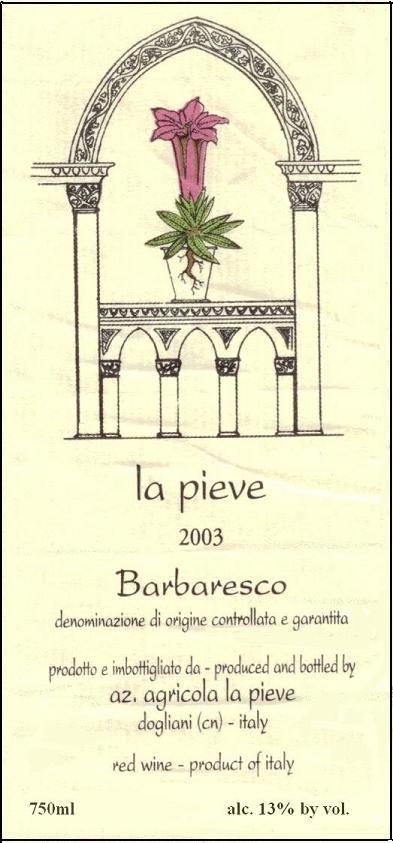2003 Barbaresco Red Blend
La Pieve, a captivating red blend from the prestigious Barbaresco region, presents a charming expression of its vintage, 2003. This wine delights with its rich ruby color, hinting at the complexity within. On the palate, La Pieve offers a medium-bodied experience, beautifully balanced by its lively acidity that keeps the flavors vibrant and fresh. The fruit intensity shines through, showcasing an array of dark berries complemented by subtle earthy notes and a whisper of spice. The tannins are well-integrated, lending a soft structure that enhances the wine's overall elegance. A harmonious blend, La Pieve is a delightful representation of Barbaresco's renowned capacity for producing outstanding wines, making it a perfect choice for any gathering or special occasion.
La Pieve, a captivating red blend from the prestigious Barbaresco region, presents a charming expression of its vintage, 2003. This wine delights with its rich ruby color, hinting at the complexity within. On the palate, La Pieve offers a medium-bodied experience, beautifully balanced by its lively acidity that keeps the flavors vibrant and fresh. The fruit intensity shines through, showcasing an array of dark berries complemented by subtle earthy notes and a whisper of spice. The tannins are well-integrated, lending a soft structure that enhances the wine's overall elegance. A harmonious blend, La Pieve is a delightful representation of Barbaresco's renowned capacity for producing outstanding wines, making it a perfect choice for any gathering or special occasion.




